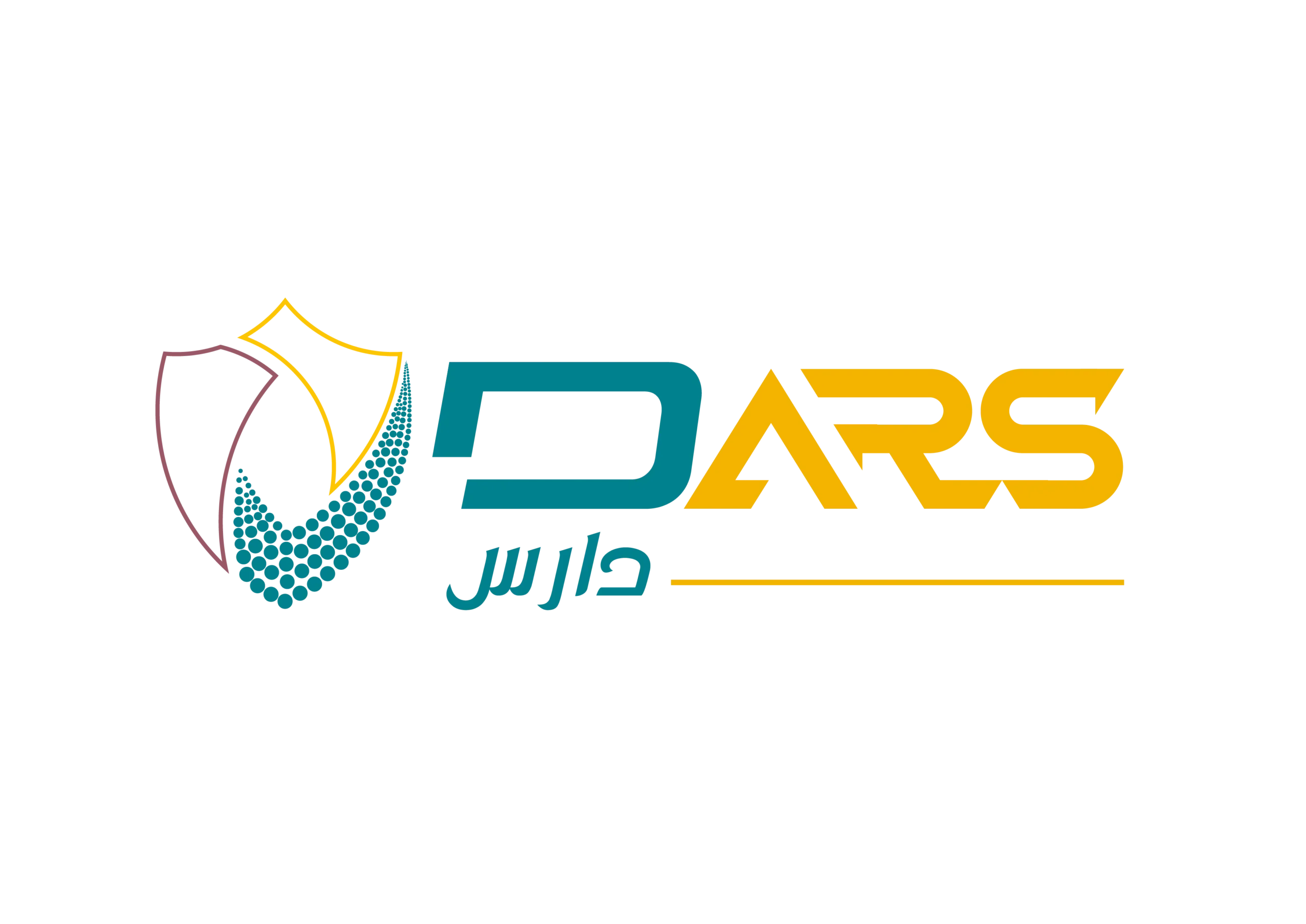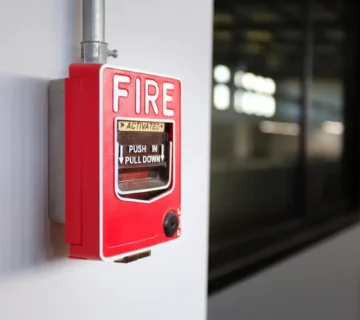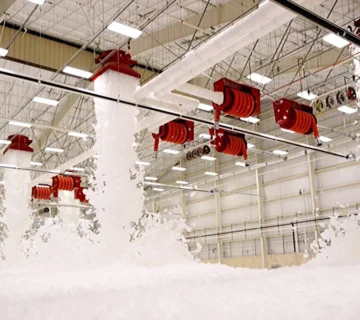Fire safety has become an integral part of modern construction and infrastructure in Saudi Arabia. As the nation moves forward under Vision 2030, the emphasis on fire protection and building safety has grown stronger than ever. Among all fire prevention solutions, the fire sprinkler system stands out as one of the most effective mechanisms to safeguard lives, property, and assets.
Understanding the Fire Sprinkler System
A fire sprinkler system is a network of pipes and sprinkler heads designed to detect and control fires automatically. Unlike manual fire extinguishing methods, these systems respond instantly when heat reaches a specific temperature, releasing water to suppress flames before they spread.
The system typically includes several components: sprinkler heads, control valves, and a pressurized water supply. When a fire occurs, the heat-sensitive elements, often glass bulbs or fusible links, break or melt, allowing water to flow through the pipes and discharge directly onto the fire source.
This automated response minimizes damage, prevents escalation, and buys crucial time for emergency response teams to intervene.
Why Fire Sprinkler Systems Matter in Saudi Arabia
Saudi Arabia’s growing urban development and industrial expansion demand advanced safety infrastructure. The fire sprinkler system has become a regulatory and practical necessity in most modern buildings, from residential complexes to industrial plants.
Enhancing Fire Protection and Life Safety
Sprinkler systems provide immediate fire suppression, reducing heat, smoke, and toxic gas accumulation. Studies show that buildings equipped with sprinklers experience fewer fatalities and less property damage than those without them.
In Saudi Arabia’s dry climate and high-rise environments, where fire can spread rapidly, these systems serve as a first line of defense, significantly reducing risks for occupants and responders alike.
Meeting Safety Compliance Requirements
Fire safety in Saudi Arabia is heavily regulated by the Saudi Civil Defense and the Saudi Building Code (SBC). Installing certified fire sprinkler systems is not only a best practice but a legal requirement for most commercial, residential, and governmental facilities.
Failing to comply can result in penalties, project delays, or even operational shutdowns. For businesses, adherence to fire safety regulations isn’t just about meeting legal standards, it’s about demonstrating corporate responsibility and protecting human life.
Components and Functionality of a Fire Sprinkler System
Understanding how a fire sprinkler system operates requires examining its main parts and their functions:
1. Sprinkler Heads
Each head is strategically placed to cover a specific area. The heat-sensitive element inside detects rising temperatures and activates the water release mechanism.
2. Piping Network
The pipes carry water from the main supply to each sprinkler head. Depending on the system type, they may be constantly filled with water (wet system) or pressurized air (dry system).
3. Control Valves and Alarm Systems
Valves regulate water flow and pressure, while integration with a fire alarm system ensures that occupants and responders are alerted immediately once activation occurs.
How Fire Sprinkler Systems Work: The Science Behind the Safety
When the temperature around a sprinkler head reaches approximately 68°C (155°F), the glass bulb inside bursts due to the expanding liquid. This releases a plug, allowing pressurized water to flow through and disperse over the fire.
Contrary to popular belief, not all sprinklers activate at once. Each operates independently, responding only where heat is detected, which conserves water and minimizes property damage.
This localized control is what makes sprinkler systems both efficient and reliable, balancing fire prevention with building sustainability.
Fire Sprinkler System Types in Saudi Arabia
Saudi Arabia employs several system types, each designed for specific building needs and environmental conditions.
Wet Pipe Systems
The most common and cost-effective option, wet pipe systems keep water constantly in the pipes, ensuring an immediate response when triggered.
Dry Pipe Systems
Used in cold storage areas or regions where pipes may freeze, dry systems contain pressurized air instead of water. When activated, the air releases first, allowing water to flow into the pipes.
Deluge Systems
Designed for high-hazard areas like fuel depots or chemical plants, these systems release water from all sprinkler heads simultaneously once a fire is detected.
Pre-Action Systems
Ideal for facilities like data centers or museums, these systems require both smoke detection and heat activation before releasing water, preventing accidental discharge.
Saudi Fire Safety Regulations and Vision 2030
The Kingdom’s Vision 2030 places strong emphasis on building safety, sustainability, and technological advancement. With increasing urbanization, the government continues to refine its fire safety regulations through updates to the Saudi Building Code and Civil Defense directives.
These codes specify detailed requirements for sprinkler installation, testing, and certification, ensuring that both local and international safety standards are met.
Authorities such as the Saudi Standards, Metrology and Quality Organization (SASO) and Civil Defense play a crucial role in enforcing these standards. According to IMARC Group’s report, Saudi Arabia’s fire sprinkler market has grown steadily, driven by mandatory regulations and construction sector expansion.
The Ministry of Municipal and Rural Affairs and Housing (MoMRAH) also mandates comprehensive safety designs in commercial and mixed-use developments, emphasizing fire protection at the planning stage.
The Impact of Technology on Fire Sprinkler Systems
As smart building technologies gain traction, Saudi Arabia is adopting advanced fire sprinkler systems integrated with IoT sensors and monitoring platforms. These intelligent solutions can detect faults, optimize maintenance schedules, and provide real-time alerts to facility managers.
Smart sprinkler systems also interface with digital fire alarm systems, improving coordination during emergencies. Some companies even use cloud-based dashboards to visualize performance data and conduct remote inspections.
This shift toward automation aligns with Vision 2030’s goal of promoting smarter, safer, and more sustainable infrastructure across the Kingdom.
For more insights, visit International Fire & Safety Journal’s report on Saudi Giga Projects and their integration of digital safety technologies.
Challenges and Best Practices for Fire Sprinkler Installation
While fire sprinkler systems are essential, their success depends on proper design, installation, and maintenance.
- Design Compliance: Ensure the system adheres to the Saudi Building Code and Civil Defense classification standards.
- Certified Installation: Work only with approved contractors who possess the necessary technical licenses and certifications.
- Routine Maintenance: Conduct inspections and water flow tests as per local safety compliance guidelines.
For further reference, DARS’s Safety Policy outlines internal standards for ensuring the highest level of safety across all projects.
The Role of DARS in Fire Protection Excellence
DARS stands among the leading providers of fire protection and fire safety solutions in Saudi Arabia. With expertise spanning system design, installation, and long-term maintenance, the company helps businesses achieve full compliance while prioritizing occupant safety and asset preservation.
From high-rise buildings and commercial malls to industrial plants, DARS’s integrated systems are tailored to meet the specific needs of each project balancing performance, cost-efficiency, and safety compliance.
To explore DARS’s specialized fire systems, visit the official services page.
Maintenance, Innovation, and Compliance
The Importance of Fire Sprinkler System Maintenance
Owning a fire sprinkler system is only half the safety equation; maintaining it properly completes the picture. Over time, components can corrode, clog, or malfunction due to environmental conditions or neglect. Regular maintenance ensures that the system performs as designed when a fire emergency occurs.
Maintenance is not just a technical routine, it’s a regulatory obligation. The Saudi Civil Defense requires all commercial, residential, and industrial buildings to conduct periodic inspections, with certified engineers verifying operational integrity. These inspections safeguard both the public and property owners by ensuring continuous compliance with fire safety regulations.
In practice, well-maintained systems drastically reduce the risk of failure during real incidents. A neglected valve or blocked sprinkler head could make the difference between a contained incident and a devastating fire. Proper maintenance transforms the system from a passive installation into an active guardian of building safety.
Inspection and Testing: The Backbone of Safety Compliance
Every fire protection system must be inspected and tested according to a strict schedule. Saudi codes, aligned with NFPA 25 (the international standard for inspection and maintenance of water-based systems), specify that inspections occur monthly, quarterly, and annually depending on the system component.
During these inspections, technicians verify valve positions, water pressure, alarm operation, and sprinkler head condition. Annual testing involves flow tests, drainage checks, and calibration of sensors in connected systems like the fire alarm system.
The inspection process also serves a documentary purpose. Building owners are required to maintain detailed records of all maintenance activities, repair logs, and compliance certificates. These documents are vital during Civil Defense audits and insurance evaluations, reflecting an organization’s commitment to safety compliance.
Professional Maintenance: Why Expertise Matters
Engaging certified professionals to maintain fire sprinkler systems is not optional; it’s essential. Saudi Arabia’s Civil Defense classification system allows only licensed contractors to design, install, and maintain fire systems. Companies like DARS, with their experience in fire protection engineering, bring both technical skill and deep regulatory understanding to every project.
Expert technicians identify hidden faults, corroded pipes, low-pressure valves, or non-conforming fittings that could compromise functionality. Moreover, professional maintenance includes hydraulic testing, ensuring that water supply and pressure levels meet the design criteria established by both local and international codes.
This proactive approach not only protects lives but also preserves investment value, as compliance directly affects building insurance eligibility and occupancy approval.
Documentation and Audit Readiness
Saudi Civil Defense requires proof of system maintenance during routine or surprise inspections. Buildings must demonstrate compliance through verifiable documentation, including inspection reports, maintenance certificates, and flow test records.
Audit readiness is not merely about paperwork. It reflects a building owner’s accountability and adherence to fire prevention standards. A properly documented fire sprinkler system demonstrates operational readiness and transparency, aligning with Saudi Arabia’s nationwide safety objectives.
Market Trends Shaping Fire Sprinkler Systems in Saudi Arabia
The fire protection market in Saudi Arabia is rapidly transforming. Increased investment in infrastructure, industrial zones, and giga projects such as NEOM and Qiddiya has heightened the demand for modern fire suppression systems.
According to 6Wresearch, the market is expected to grow steadily through 2030, driven by stricter government regulations and a growing emphasis on sustainability. Developers and contractors are increasingly adopting eco-efficient fire extinguishing methods, such as mist-based and hybrid systems, that use less water and cause minimal collateral damage.
Another trend is the integration of IoT-enabled sprinklers with centralized control platforms. These smart systems can monitor pressure, detect leaks, and send real-time alerts to facility managers, revolutionizing traditional fire safety management practices.
The Role of Vision 2030 in Driving Innovation
Vision 2030 has become a catalyst for safety innovation. Its focus on sustainable urbanization, smart cities, and high-value industrial development has encouraged the adoption of intelligent fire sprinkler systems that combine performance with energy efficiency.
Smart systems equipped with thermal sensors and wireless connectivity can detect abnormalities before a fire starts, transitioning fire protection from a reactive to a predictive model. This predictive approach aligns with Saudi Arabia’s strategic goal to minimize human risk while enhancing building safety through technology.
Public-private partnerships are also emerging as a strong force. Local manufacturers are collaborating with global leaders in fire suppression technologies, promoting knowledge transfer and skill development across the Kingdom’s engineering sector.
Innovation in Materials and Design
Beyond digital technology, advancements in materials have improved the performance and lifespan of fire sprinkler systems. Modern systems often use CPVC pipes, which resist corrosion and microbial buildup. This material is lightweight, easy to install, and approved by Saudi Civil Defense for specific applications.
Sprinkler head design has also evolved. Adjustable and concealed models are now preferred in architectural settings for their discreet appearance and precision activation. These innovations maintain safety compliance while aligning with aesthetic and functional design goals.
Companies like Blazemaster have contributed significantly to developing CPVC-based solutions that meet Saudi and international standards.
Integrating Fire Sprinkler Systems with Other Safety Technologies
Modern buildings no longer rely on isolated systems. Integration between fire sprinkler systems, fire alarm systems, and emergency lighting is now the standard. This interconnected network ensures that when one system detects an incident, others automatically respond.
For instance, an activated sprinkler may trigger the fire alarm system and send a real-time notification to control centers. Elevators switch to emergency mode, ventilation adjusts to contain smoke, and evacuation lights guide occupants safely outside.
This level of automation minimizes confusion during emergencies and improves overall emergency response effectiveness. It also aligns with the new Saudi Building Code’s emphasis on integrated life safety systems.
Smart Maintenance and Predictive Monitoring
The next frontier for fire sprinkler management lies in predictive maintenance. Using IoT sensors, facilities can monitor their systems remotely, identifying potential malfunctions before they cause downtime or hazards.
Predictive monitoring allows for data-driven maintenance schedules, replacing routine checks with targeted interventions. For example, sensors can detect early signs of corrosion or low water pressure, prompting a maintenance alert directly to the service provider.
This shift not only enhances reliability but also reduces operational costs over time, reflecting Saudi Arabia’s growing preference for sustainable and efficient safety technologies.
Challenges in Fire Sprinkler Adoption
Despite rapid advancements, several challenges persist. Retrofitting old buildings with modern sprinkler systems can be technically complex, especially in heritage structures or facilities with limited ceiling space. The cost of installation and ongoing maintenance can also deter small property owners.
Additionally, awareness about proper usage and regular inspections remains inconsistent. Many property managers still view fire sprinkler systems as one-time installations rather than continuous safety investments.
To address this, the Saudi Civil Defense conducts educational campaigns emphasizing the importance of active maintenance and compliance with fire safety regulations. Industry leaders such as DARS play a critical role in raising awareness by offering professional consultation and compliance support.
The Role of DARS in Fire Sprinkler Maintenance and Innovation
DARS stands at the forefront of Saudi Arabia’s fire safety sector, providing end-to-end solutions that combine expertise, innovation, and regulatory alignment. The company’s services extend beyond installation encompassing regular inspection, performance testing, and compliance documentation.
DARS’s approach emphasizes long-term system reliability. By integrating modern technologies and certified components, the company ensures every fire sprinkler system it installs meets both Saudi Civil Defense standards and international benchmarks.
Their maintenance philosophy is proactive rather than reactive. Through preventive monitoring and professional audits, DARS helps clients achieve seamless safety performance and avoid regulatory penalties.
Preparing for the Future: From Regulation to Innovation
The landscape of fire protection in Saudi Arabia is evolving from basic compliance toward technological leadership. As giga projects expand and sustainability becomes central to construction practices, intelligent and efficient sprinkler systems will define the future of fire safety.
Choosing the Right Provider and Ensuring Lasting Compliance
Understanding the Stakes: Why Choosing the Right Fire Sprinkler Provider Matters
The effectiveness of a fire sprinkler system is only as strong as the expertise behind it. In Saudi Arabia, where strict fire safety regulations govern installation, inspection, and performance, the selection of a qualified contractor determines both operational safety and regulatory approval.
A provider must go beyond offering products; they must understand system design intricacies, Saudi Civil Defense codes, and the nuances of fire protection in different building types. From residential towers to petrochemical facilities, each project carries unique risks that require customized sprinkler solutions.
Choosing the wrong provider could lead to costly rework, delayed certifications, and compromised building safety, which in turn can affect insurance coverage and occupancy permits.
Factors to Consider When Selecting a Fire Sprinkler Company
1. Certification and Civil Defense Approval
Before engaging any provider, it is essential to verify their certification and license from the Saudi Civil Defense. These accreditations confirm that the company meets the technical and procedural standards for fire suppression system installation and maintenance.
Companies like DARS, listed among the Civil Defense–approved contractors, maintain a record of excellence in compliance and quality assurance. Choosing an approved firm ensures that the system will pass both internal and external inspections without delays or safety concerns.
2. Experience and Proven Track Record
A seasoned fire protection provider brings years of project experience and technical refinement. Experience in handling large-scale projects hospitals, malls, schools, and industrial plants indicates that the company can handle complex system designs and integrate advanced technologies effectively.
A provider’s track record should also demonstrate reliability under real conditions. Fire sprinkler systems are tested during emergencies, and only firms with proven, field-tested solutions can guarantee consistent performance across different environments.
3. Integrated Service Offering
Comprehensive providers manage the entire lifecycle of a fire sprinkler system from design and installation to testing, maintenance, and certification renewal. This holistic approach ensures consistency, accountability, and cost efficiency over time.
DARS, for instance, integrates its fire sprinkler services with fire alarm system design and electrical safety compliance, offering clients an end-to-end safety infrastructure that simplifies coordination and inspection.
Cost vs. Value: Understanding the True Investment
A common misconception is that price should be the leading factor in choosing a provider. However, with fire safety, short-term savings often lead to long-term risks. The real value lies in durability, regulatory approval, and minimized downtime.
An effective fire sprinkler system reduces potential property loss, insurance premiums, and business interruptions. In contrast, a poorly designed or inadequately maintained system can incur massive costs through fines, repairs, or even total loss during an emergency.
Therefore, organizations must evaluate proposals not just by the installation cost but by the entire lifecycle including maintenance, upgrades, and compliance documentation. The right investment ensures sustainable protection and operational peace of mind.
Legal Compliance and the Saudi Building Code
Saudi Arabia enforces a robust framework of safety standards under the Saudi Building Code (SBC) and Civil Defense guidelines. These laws define the specifications, testing intervals, and documentation required for fire sprinkler systems in every type of building.
Failure to comply with these standards can result in penalties, suspension of licenses, or operational shutdowns. Hence, property owners and developers must ensure their systems align with safety compliance requirements and remain audit-ready at all times.
DARS’s expertise lies in interpreting and applying these codes precisely, ensuring each project achieves approval swiftly and confidently.
Assessing Quality Through Testing and Certification
Testing forms a critical part of the compliance journey. Before a fire sprinkler system is commissioned, it undergoes a series of inspections, hydraulic pressure testing, functional flow tests, and alarm verification.
These evaluations confirm that the system activates correctly, maintains pressure, and communicates seamlessly with other safety networks such as alarms and pumps. After successful testing, the Civil Defense issues a certificate of compliance, officially authorizing the building for use.
Regular retesting ensures ongoing readiness. According to AD Systems KSA, scheduled functional testing every six months helps detect minor issues early, preventing major breakdowns later.
Smart Decision-Making with Technology
Digital transformation has reached the realm of fire safety. Today’s advanced sprinkler systems are embedded with sensors and connected platforms, enabling predictive maintenance and performance analytics. These tools help facility managers make data-driven decisions, optimizing system efficiency and extending lifespan.
IoT dashboards can provide real-time performance visualization, tracking factors like water flow, temperature, and valve integrity. When anomalies appear, automated alerts ensure immediate corrective action, enhancing both compliance and responsiveness.
Saudi Arabia’s industrial zones and smart city projects increasingly rely on these digital safety infrastructures, showcasing how fire protection is evolving alongside technological innovation.
Ensuring Long-Term Reliability and Compliance
The work doesn’t end after installation. Every system must undergo periodic inspections and recertification to maintain fire safety effectiveness. The Saudi Civil Defense mandates quarterly and annual maintenance for all sprinkler systems, including documentation of water pressure tests and performance logs.
Sustainability in safety also involves timely component replacements, software updates for smart systems, and periodic training for staff and facility teams. Fire protection should evolve with the building itself adapting to layout changes, new equipment, and occupancy variations.
Providers like DARS manage these evolving needs through scheduled maintenance programs that ensure consistent reliability, minimal downtime, and continuous fire prevention readiness.
Partnering with DARS: A Mark of Assurance
DARS’s legacy in Saudi Arabia’s fire protection sector is built on trust, precision, and compliance. The company’s team of engineers and technicians brings extensive knowledge of local regulations and international standards, ensuring every project reflects operational excellence.
From the design of complex fire sprinkler systems in industrial plants to customized maintenance programs for residential towers, DARS combines innovation with reliability. Each project reflects its commitment to saving lives, protecting assets, and supporting the Kingdom’s safety vision.
For a full overview of DARS’s services and qualifications, visit the About Us page.
The Future of Fire Safety in Saudi Arabia
As Saudi Arabia continues to grow, fire safety will remain central to its infrastructure development. With Vision 2030 encouraging sustainability and innovation, the integration of smart technologies, eco-efficient suppression methods, and strict compliance frameworks will define the next era of fire protection.
Businesses and developers who invest in advanced fire sprinkler systems are not only safeguarding their assets but also contributing to the national vision of a safer, more resilient society.
The partnership between innovation, regulation, and expertise championed by companies like DARS ensures that Saudi Arabia remains a regional leader in safety engineering and risk management.




